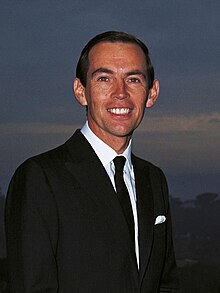Silicon Valley is a nickname for the southern portion of the San Francisco Bay Area, which is located in the part of the U.S. state of California known as Northern California. It is home to many of the world's largest high-tech corporations, as well as thousands of tech startup companies. The word "valley" refers to the Santa Clara Valley where the region has traditionally been centered, which includes the city of San Jose and surrounding cities and towns. The word "silicon" originally referred to the large number of silicon chip innovators and manufacturers in the region. The term "Silicon Valley" eventually came to refer to all high tech businesses in the area, and is now generally used as a metonym for the American high-technology economic sector.
Silicon Valley is a leading hub and startup ecosystem for high-tech innovation and development, accounting for one-third of all of the venture capital investment in the United States. Geographically, Silicon Valley is generally thought to encompass all of the Santa Clara Valley, San Francisco, the San Francisco Peninsula, and southern portions of the East Bay.

The term Silicon Valley is attributed to Ralph Vaerst, a local entrepreneur. Its first published use is credited to Don Hoefler, a friend of Vaerst's, who used the phrase as the title of a series of articles in the weekly trade newspaper Electronic News. The series, entitled "Silicon Valley in the USA", began in the paper's January 11, 1971, issue. The term gained widespread use in the early 1980s, at the time of the introduction of the IBM PC and numerous related hardware and software products to the consumer market. The Silicon part of the name refers to the high concentration of companies involved in the making of semiconductors (silicon is used to create most semiconductors commercially) and computer industries that were concentrated in the area. These firms slowly replaced the orchards and related agriculture and food production companies which gave the area its initial nickname — the "Valley of Heart's Delight."
Stanford University, its affiliates, and graduates have played a major role in the development of this area. Some examples include the work of Lee De Forest with his invention of a pioneering vacuum tube called the Audion and the oscilloscopes of Hewlett-Packard.
A very powerful sense of regional solidarity accompanied the rise of Silicon Valley. From the 1890s, Stanford University's leaders saw its mission as service to the West and shaped the school accordingly. At the same time, the perceived exploitation of the West at the hands of eastern interests fueled booster-like attempts to build self-sufficient indigenous local industry. Thus, regionalism helped align Stanford's interests with those of the area's high-tech firms for the first fifty years of Silicon Valley's development.
During the 1940s and 1950s, Frederick Terman, as Stanford's dean of engineering and provost, encouraged faculty and graduates to start their own companies. He is credited with nurturing Hewlett-Packard, Varian Associates, and other high-tech firms, until what would become Silicon Valley grew up around the Stanford campus. Terman is often called "the father of Silicon Valley".
In 1956 William Shockley, the creator of the transistor, moved from New Jersey to Mountain View, California, to start Shockley Semiconductor Laboratory to live closer to his ailing mother in Palo Alto. Shockley's work served as the basis for many electronic developments for decades.
During 1955–85, solid state technology research and development at Stanford University followed three waves of industrial innovation made possible by support from private corporations, mainly Bell Telephone Laboratories, Shockley Semiconductor, Fairchild Semiconductor, and Xerox PARC. In 1969, the Stanford Research Institute (now SRI International), operated one of the four original nodes that comprised ARPANET, predecessor to the Internet.
Silicon Valley has a social and business ethos that supports innovation and entrepreneurship. Attempts to create "Silicon Valleys" in environments, such as Europe, where disruptive innovation does not go over well have a poor track record.
According to a 2008 study by AeA in 2006, Silicon Valley was the third largest high-tech center (cybercity) in the United States, behind the New York metropolitan area and Washington metropolitan area, with 225,300 high-tech jobs. The Bay Area as a whole however, of which Silicon Valley is a part, would rank first with 387,000 high-tech jobs. Silicon Valley has the highest concentration of high-tech workers of any metropolitan area, with 285.9 out of every 1,000 private-sector workers. Silicon Valley has the highest average high-tech salary at $144,800.Largely a result of the high technology sector, the San Jose-Sunnyvale-Santa Clara, CA Metropolitan Statistical Area has the most millionaires and the most billionaires in the United States per capita.
The region is the biggest high-tech manufacturing center in the United States.The unemployment rate of the region was 9.4% in January 2009, up from 7.8% in the previous month. Silicon Valley received 41% of all U.S. venture investment in 2011, and 46% in 2012.
Manufacture of transistors is, or was, the core industry in Silicon Valley. The production workforce was for the most part composed of Asian and Latina female immigrants who were paid low wages and worked in hazardous conditions due to the chemicals used in the manufacture of integrated circuits. Technical, engineering, design, and administrative staffs were in large part male and well compensated.
Many more jobs are created in Silicon Valley then there are houses built. Housing prices are extremely high, far out of the range of production workers






